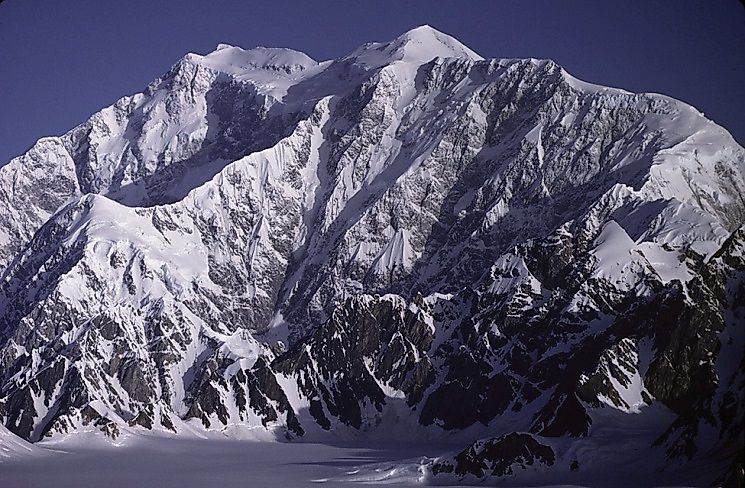Where Does Mount Logan Rise?

5. Description
Mount Logan, achieving a peak altitude of 19,551 feet (5,959 meters), is the highest mountain in Canada and the second highest mountain in the North American continent after Mount Denali of Alaska in the United States. The mountain is part of the St. Elias mountains of southwestern Yukon, and is located less than 40 kilometers from the Yukon-Alaskan (Canadian-U.S.) border. Mount Logan is credited with having the largest base circumference among the non-volcanic mountains of the earth. The Kluane National Park and Reserve was established in 1976, harboring Mount Logan as its focal point and covering an area of 22,000 square kilometers.
4. Historical Role
The area in and around Mount Logan is believed to have been inhabited by such First Nations' groups of people as the Kluane, Aishihik, and Champagne since times immemorial in the region's historical record. Mount Logan was named by Professor I.C. Russell, an American geologist and geographer, who named the mountain after Sir William E. Logan, a Scottish-Canadian geologist and founder of the Geological Survey of Canada. On June 23rd, 1925, an international team led by A.H. MacCarthy was the first team to climb to the summit of Mount Logan. In the 1970s, the mountain served as the base of a high altitude, physiology-oriented medical research undertaking conducted by a joint US-Canadian team and funded by the Arctic Institute of North America and the Canadian Armed Forces.
3. Modern Significance
Currently, Mount Logan is an extremely popular destination for those mountaineers, climbers, and hikers who visit the Kluane National Park and Reserve to enjoy the spectacular landscape of the region, explore its flora and fauna, and hike or climb up Mount Logan. Mount Logan also enjoys the third position in the list of Second Seven Summits of the world, representing the North American continent in the list. The mountain hosts two major glaciers, these being the Hubbard and Logan. The Logan Glacier forms the headwaters of the Chitina River in Alaska. Currently, the Kluane National Park region is home to a large number of indigenous settlements, the residents of which are entitled to hunter-gatherer harvesting rights in the nature reserve.
2. Habitat
The Kluane National Park and Reserve encompassing Mount Logan is home to a diverse variety of flora and fauna. The lower valleys and slopes of the park are covered with montane forests, comprised by such plants as the Trembling aspen, White spruces, and Balsam poplars. Above the treeline, lying at about 4,000 feet in the "transition zone", stunted shrubs and trees like alders, willows, and Dwarf birches occupy much of the landscape. Further up, Alpine desert vegetation, comprising of mosses, lichens, and sparsely spread and stunted shrubs, finally give way to the snow-clad mountain peaks. The fauna of the park is comprised by herbivores like Dall sheep, mountain goats, and caribou. Grizzly bears and brown bears are the predators at the top of the food chain in this ecosystem. Wolves, marmots, Red foxes, lynxes, coyotes, and beavers are some of the other mammalian species characteristic of the Kluane National Park and Reserve. A total of 150 species of birds are found in this eco-region as well, including Golden eagles, Bald eagles, and Yellow-rumped warblers, among many others.
1. Threats and Disputes
Though the Kluane National Park and Reserve is well preserved and managed by the Canadian government, many threats, such as those arising from climate change, are difficult to eliminate or even mitigate. Global warming poses a risk to Mount Logan’s glaciers, which could gradually melt with rising global temperatures. In turn, this will have the effect of adversely affecting the hydrology patterns of the park and those well beyond. Besides climate change, pressures on the ecosystem induced by growing human settlements in the region could also threaten the native flora and fauna of the park.











